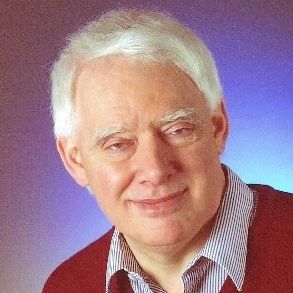 It is with a heavy heart, that we must announce the passing of George Michael Sheldrick.
It is with a heavy heart, that we must announce the passing of George Michael Sheldrick.
Everyone in crystallography knows George as a giant in the development of computing methods despite his unassuming manner. His SHELX programs for structure solution and refinement have shaped the field and their use has been key to innumerable projects. The same is valid for his contribution to data processing and analysis in the programs he wrote for Bruker detectors. Only those young to crystallography will have missed that while typically our papers are scored by the impact factor of a journal, one paper of George rocketed the impact factor of the journal Acta Crystallographica A from 2.05 to 54, surpassing that of Science, Nature or Cell in the year 2010. This establishes how many scientific projects must have been aided by George´s insightful work and bright solutions.
Those of us who have had the privilege to meet George in person also know him for his passion for problem solving, originality, sense of humour and deep humanity.
George has touched the lives and careers of so many group members, providing a work environment that was simultaneously sheltered and free. He was always receptive to our ideas, encouraging our independence, providing the means to support them and giving us credit for what we accomplished. At the same time, we were spared the financial worries or conflicts attached to any institute. If Goethe was right in writing that character is built in the tempest of life while talent requires the calm, George shaped the optimal environment to develop our talents. An unusual trait of George is that he always pondered what people said, not who said it. Experience shows that humans are more ready to value what their friends, allies and referents state as being correct and search for reasons why their competition must be wrong! This lack of prejudice may explain why George´s research group was always most diverse: he gave everyone fair opportunities.
In lectures, talks or conversations, George would explain complicated concepts making them come across as compellingly simple. His teaching would always prompt critical thinking, as when he faked a nuclear explosion producing a mushroom in his chemistry lecture with experiments. This was the 80´s and half of the audience started an im promptu demonstration against nuclear power before being absorbed in the debate of why this was impossible and the analysis of what experiment had really taken place.
Working with George was inspiring and fun, it covered a broad range of interests in chemistry, geology and biology evolving along the years. In Cambridge and Göttingen, George closely supervised more than a hundred theses. Former students and co-workers would frequently stop in Göttingen and pop up to join the coffee time, where daily group discussions would take place. Many of us have kept in touch ever since, resorted to him for advice or just for the pleasure of discussing science and puzzling problems.
George Sheldrick will be missed.
Regine Herbst-Irmer and Isabel Usón
If you would like to express your condolences to George´s family, please use the following email address: a.sheldrick at gmx.de
